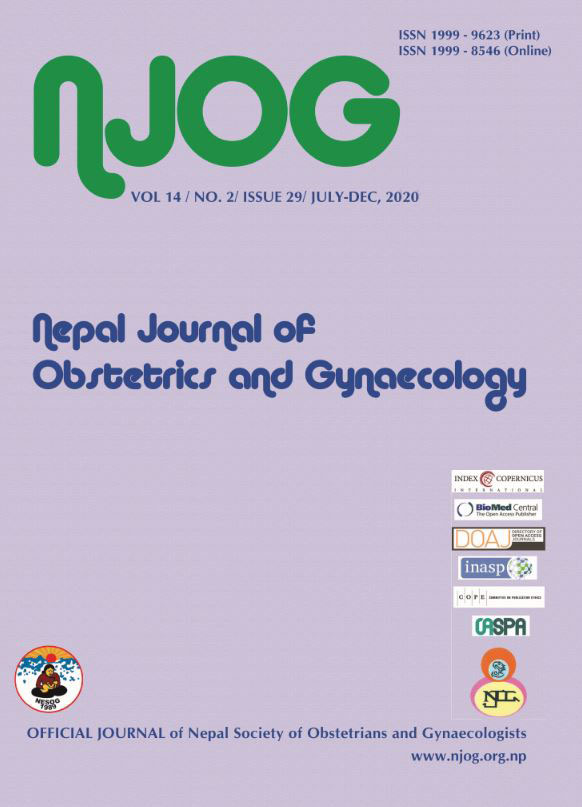Hysteroscopy in Abnormal Uterine Bleeding
Abstract
Aims: To evaluate the role of hysteroscopy in abnormal uterine bleeding in women of reproductive age group and to correlate the hysteroscopic findings with histopathology.
Methods: The study was carried out in the Department of Obstetrics and Gynecology at Patan Academy of Health Sciences, Kathmandu. Thirty patients of age group 20-61years with abnormal uterine bleeding were included. Demonstrable pelvic pathology like cancer of cervix, vagina or endometrium and active pelvic inflammatory disease (PID) were excluded. All patients were assessed using hysteroscopy and findings were correlated with histopathology.
Results: On hysteroscopy, endometrium was normal in 30%, hyperplastic in 30%, polyps found in 20% and atrophic in 10%. Endometrial polyp and submucous fibroid was seen in 6.7% cases and 3.3% cases each. On confirmation by histopathology the findings were: normal endometrium in 40% cases, hyperplastic in 40%, polyp in 16.7% and atrophic in 3.3%. Submucous fibroid and suspicious endometrium came to be endometrial hyperplasia on histopathology.
Conclusions: Hysteroscopy has more than 90% diagnostic accuracy to diagnose endometrial morphology and diagnostic agreement of endometrial finding is 63.33%.
Keywords: abnormal uterine bleeding, hysteroscopy, predictive value
Downloads
Downloads
Published
How to Cite
Issue
Section
License

This work is licensed under a Creative Commons Attribution-NonCommercial 4.0 International License.
Copyright on any research article in the Nepal Journal of Obstetrics and Gynaecology is retained by the author(s).
The authors grant the Nepal Journal of Obstetrics and Gynaecology a license to publish the article and identify itself as the original publisher.
Articles in the Nepal Journal of Obstetrics and Gynaecology are Open Access articles published under the Creative Commons CC BY-NC License (https://creativecommons.org/licenses/by-nc/4.0/)
This license permits use, distribution and reproduction in any medium, provided the original work is properly cited, and it is not used for commercial purposes.



